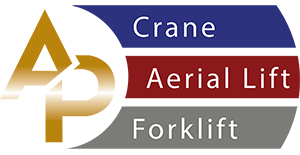
When it comes to operating a forklift, safety should always be the top priority. Forklifts are powerful and versatile machines that play a crucial role in various industries, from warehouses to construction sites. However, improper operation can lead to accidents and injuries. In this guide, we'll provide you with essential hints for safe forklift operation to ensure the well-being of operators and those working around them.
Understand Your Forklift
Before operating a forklift, it's essential to have a deep understanding of the machine itself. Different types of forklifts have varying capabilities, weight capacities, and operational controls. Familiarize yourself with the specific forklift model you'll be using and read the manufacturer's manual to gain insights into its features and limitations.
Proper Training and Certification
Operating a forklift requires specialized training and certification. Ensure that all operators have undergone comprehensive training programs that cover both theoretical knowledge and practical skills. Certification should be up-to-date and in compliance with industry standards. Regular refresher courses can also help operators stay current with the latest safety protocols.
Get online forklift certification courses for the safe operations of operating lifts.
Pre-Operational Inspections
Before each shift, conduct thorough pre-operational inspections of the forklift. Check for any signs of damage, such as leaks, worn tires, malfunctioning brakes, or faulty lights. Ensure that the seatbelt is functioning correctly, and all safety features are in place. Any issues should be reported and addressed promptly before the forklift is used.
Load Management
Properly managing the load is crucial for safe forklift operation. Always adhere to the forklift's rated capacity and load center specifications. Position the load according to the manufacturer's guidelines, distributing the weight evenly to prevent tipping. Remember to tilt the mast backward to improve stability while traveling with a load.
Clear Visibility
Maintaining clear visibility is essential to prevent accidents. Keep the forklift's windows, mirrors, and cameras clean and unobstructed. When carrying a load, ensure that your view isn't obstructed and use a spotter if necessary, especially when navigating tight spaces or congested areas.
Proper Speed and Maneuvering
Adhere to recommended speed limits and exercise caution when maneuvering the forklift. Avoid sharp turns, especially when carrying a heavy load, as this can increase the risk of tipping. Slow down when approaching corners, doorways, or intersections, and always sound the horn to alert pedestrians and other operators.
Parking and Storage
When parking the forklift, choose a level and stable surface. Lower the forks to the ground, engage the parking brake, and turn off the engine before exiting the vehicle. If parking on an incline, use wheel chocks to prevent unintended movement. Store the forklift in designated areas when not in use.
Safe forklift operation is a shared responsibility that requires proper training, diligence, and adherence to established safety protocols. By understanding your forklift, conducting pre-operational inspections, managing loads correctly, and maintaining clear visibility, you contribute to a safer work environment for everyone. Remember, a well-operated forklift is not only efficient but also a vital component of workplace safety.
Learn about avoiding damage to forklift forks safety tips.
